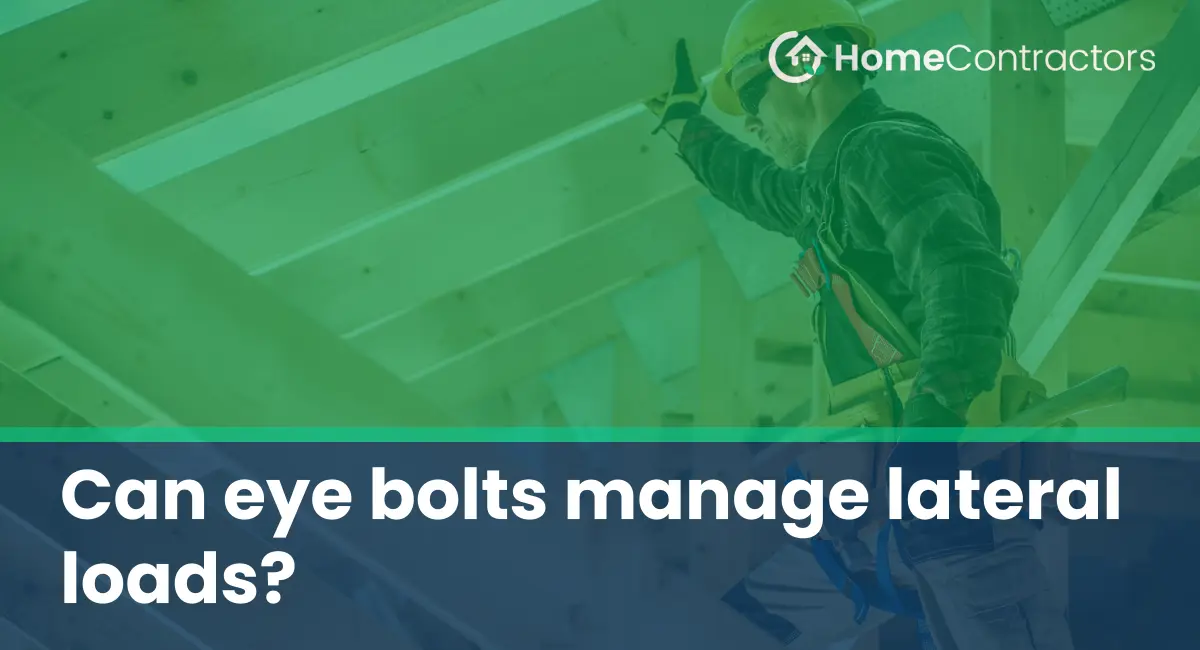In this article, we will explore the capabilities of eye bolts for handling lateral forces and discuss the considerations that need to be taken into account.
Understanding Eye Bolts
Before diving into the question of managing lateral loads, let’s have a brief understanding of eye bolts. Eye bolts consist of a threaded shank with a loop or “eye” at the end, which allows for easy attachment of hooks, ropes, or other connecting devices. They come in various sizes, materials, and load capacities to meet different requirements.
Primary Use for Vertical Loads
Eye bolts are primarily designed for vertical loads, where the weight is applied in a straight downward force. They are commonly used for lifting heavy objects, such as machinery, equipment, or lifting beams. In these scenarios, the load is directly transmitted through the shank of the eye bolt without significant lateral forces.
Lateral Loads and Eye Bolts
While eye bolts excel in carrying vertical loads, they may not be suitable for managing lateral loads on their own. Lateral loads refer to forces applied horizontally or at an angle to the vertical axis of the eye bolt. These forces can lead to bending or shearing of the bolt, potentially compromising its integrity.
Considerations for Lateral Loads
When considering the use of eye bolts for lateral loads, it is crucial to take several factors into account:
- Angle of the Load: The angle at which the lateral load is applied can significantly impact the performance of eye bolts. Applying force at an angle places additional stress on the shank and can cause the eye bolt to bend or even fail.
- Load Capacity: It is essential to ensure that the eye bolt being used has adequate load capacity for both vertical and lateral loads. Manufacturers provide load rating specifications for their eye bolts, and exceeding these limits can lead to dangerous situations.
- Installation Method: Proper installation is critical to maximize the load-bearing capacity of eye bolts. Ensuring that the eye bolt is securely tightened using the appropriate nut or fastening device is crucial. Additionally, eye bolts should be attached to a compatible anchor point that can withstand the lateral forces being applied.
- Reinforcement Support: In certain cases, additional reinforcement may be required to handle lateral loads effectively. Reinforcing plates, washers, or other supporting structures can be added to distribute the forces and increase the stability of the eye bolt.
Alternatives for Lateral Loads
Considering the limitations of eye bolts in managing lateral loads, alternative fastening methods might be more appropriate in certain situations. Anchors like wedge anchors, toggle bolts, or expansion anchors are often better suited for handling lateral loads. These anchors provide greater stability and resistance against forces applied in different directions.
Consulting with Experts
When dealing with complex applications or unusual lateral loads, it is always wise to consult with engineering professionals or safety experts. Seeking their advice will help ensure the appropriate selection and installation of fasteners that can effectively manage lateral loads while maintaining the required safety standards.
While eye bolts are excellent for handling vertical loads, they may not possess the necessary features to manage lateral forces on their own. Understanding the limitations of eye bolts in managing lateral loads is crucial for maintaining safety and preventing accidents. By considering factors such as load capacity, load angle, proper installation, and reinforcement support, the risks associated with using eye bolts for lateral loads can be minimized. Nonetheless, if encountering significant lateral loads, it is recommended to explore alternative fastening methods that offer higher resistance in different directions. Consulting with experts is always advisable to ensure the best outcome for any specific application.
